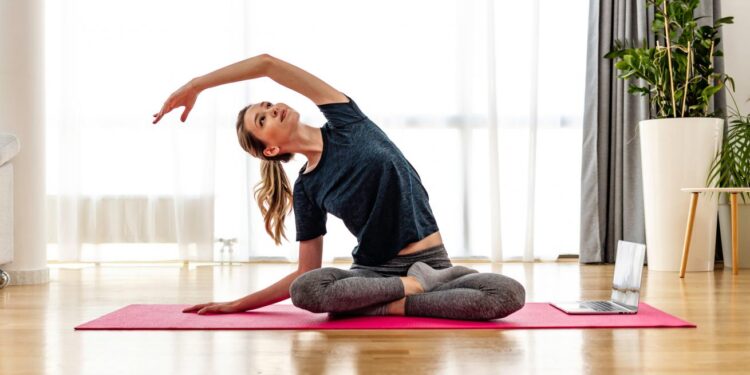Recent scientific findings have reinforced the critical role that flexibility plays in supporting overall health and longevity. A longitudinal study involving more than 3,000 individuals over a span of ten years revealed a strong correlation between greater flexibility and a reduced risk of premature death, cardiovascular disease, and metabolic conditions.
Dr. Claudio Gil Araújo, a prominent researcher in the field of exercise medicine, has developed the “Flexitest,” a protocol consisting of 20 standardized stretches designed to evaluate joint mobility. His research indicates that flexibility naturally diminishes with age—particularly in the shoulders and trunk—but that this decline can be mitigated through regular, targeted stretching.
Foundational Stretches to Improve Flexibility
Introducing a simple daily stretching routine can offer meaningful physical benefits. The following exercises are particularly effective:
- Hamstring Stretch: Sit with one leg extended and the other bent. Lean forward from the hips toward the extended leg while keeping your spine straight. Hold for 20 to 30 seconds and switch sides.
- Spinal Twist: Lie on your back, draw one knee toward your chest, and gently guide it across your body, ensuring your shoulders remain flat against the ground. Hold for 20 to 30 seconds and repeat on the opposite side.
- Shoulder Stretch: Extend one arm across your chest and use the opposite hand to pull the arm closer to your body. Hold for 20 to 30 seconds and then switch sides.
- Wrist Flexor Stretch: With one arm extended forward and the palm facing upward, use the opposite hand to gently pull the fingers back toward your body. Hold for 20 to 30 seconds and alternate hands.

Why Regular Stretching Matters
Experts recommend engaging in at least five minutes of stretching daily. Beyond increasing flexibility, regular stretching enhances circulation, supports vascular health, reduces muscular tension, and contributes to mental well-being. Integrating these simple movements into your daily habits can significantly improve mobility and overall vitality.
Evidence-Based Guidelines for Stretching
According to the American College of Sports Medicine (ACSM), adults should perform flexibility exercises for all major muscle-tendon groups—such as the neck, shoulders, chest, torso, lower back, hips, legs, and ankles—at least two to three times per week. To achieve optimal benefits, each stretch should be held for a total of 60 seconds. This may be accomplished through multiple shorter holds (e.g., 15 seconds repeated four times or 20 seconds repeated three times).
Target Areas for Maximum Benefit
To sustain full-body mobility and prevent stiffness, special attention should be paid to the lower extremities—including the calves, hamstrings, hip flexors, and quadriceps. Stretching the upper body, particularly the shoulders, neck, and lower back, is also essential in relieving tension associated with stress, poor posture, and extended periods of sitting.
Best Practices for Safe and Effective Stretching
- Warm-Up First: Begin with five to ten minutes of light aerobic activity to increase blood flow and prepare the muscles for stretching.
- Stretch with Care: Move into each stretch slowly, holding the position at a point of gentle tension without bouncing or forcing the movement.
- Focus on Breathing: Maintain steady, relaxed breathing during each stretch. Avoid holding your breath, which can lead to tension and reduced oxygen flow.

Making Stretching a Habit
Incorporating stretching into your lifestyle requires minimal time and equipment, yet it offers profound long-term advantages. Whether performed upon waking, after a workout, or during workday breaks, consistent stretching can lead to enhanced physical function, reduced risk of injury, and improved quality of life.








